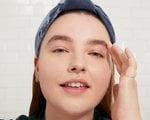SPF

What Does SPF Mean?
As mentioned above, SPF is an acronym for Sun Protection Factor. It’s “a measurement of a sunscreen's ability to prevent sunburn by blocking UVB rays,” says Dr. Hale. According to the FDA, SPF measures “how much solar energy (UV radiation) is required to produce sunburn on protected skin (i.e., in the presence of sunscreen) relative to the amount of solar energy required to produce sunburn on unprotected skin.” The higher the SPF value, the greater the sun protection.
When shopping for sunscreen, Dr Hale notes that you should always look for an SPF of at least 30. “No matter what your plans are, you should wear a broad spectrum sunscreen with SPF 30 or higher every day,” she says. “Even if your plans are to be inside all day, UVA rays penetrate through windows — and plans change! If you’re planning to be outside, you should seek the shade whenever possible and reapply your sunscreen every two hours (more often if you’re sweating, swimming or toweling off).”
In addition to opting for a formula with a high SPF, be sure to make sure your sunscreen is broad spectrum. “Only sunscreens labeled ‘Broad Spectrum’ have been tested to protect against both UVA and UVB rays,” explains Dr. Hale. “Sunscreens that are not broad spectrum only protect against UVB rays.”
(UVA rays refer to longer rays that penetrate into the deeper layers of your skin, while UVB rays are more superficial, like when you get a sunburn after lying in the sun at the beach — you need protection against both.)
Our Favorite Broad-Spectrum Sunscreens
CeraVe Hydrating Sheer Sunscreen Broad Spectrum SPF 30 for Face & Body
This dynamic, hydrating sunscreen from CeraVe can be used on both your face and your body, so it’s the only sunscreen you need. Formulated with zinc oxide and chemical sun filters, it’s an innovative mineral-chemical hybrid. It also feels super lightweight and doesn’t leave a white cast on your skin.

La Roche-Posay Anthelios Mineral Tinted Sunscreen for Face SPF 30
If you’re looking for an everyday sunscreen to layer with makeup (or wear on no-makeup days), check out this tinted option. It leaves your skin looking naturally radiant but still has a matte, non-greasy finish.

Kiehl’s Super Fluid UV Defense Daily Facial SPF 50+
The Kiehl’s Super Fluid UV Defense Daily Facial SPF 50+ is our pick for oily and breakout-prone skin types. It’s ultra-lightweight and absorbs into your skin seamlessly without leaving behind residue or a cast.

L’Oréal Paris Revitalift Derm Intensifies Broad Spectrum SPF 50 Invisible UV Fluid
Prevent the look of dark spots with this fluid face sunscreen enriched with vitamins C and E. A great option for mature skin, this formula helps improve the look of skin tone, brightness and fine lines.

Vacation Classic Spray SPF 50
It doesn’t get much easier than spray sunscreen, and we love this lightweight, transparent formula from Vacation for long beach days full of fun in the sun and surf. It’s mess-free and super easy to apply — plus, it won’t spill in your beach bag.





.jpg?cx=0.490000009536743&cy=0.540000021457672&cw=150&ch=120&blr=False&hash=0B0F55675A6B9FE3724F6E2EC9118A01)









.jpg?cx=0.490000009536743&cy=0.540000021457672&cw=150&ch=120&blr=False&hash=5E78490B76BBC8CC9D76D2EBDFF515E0)












